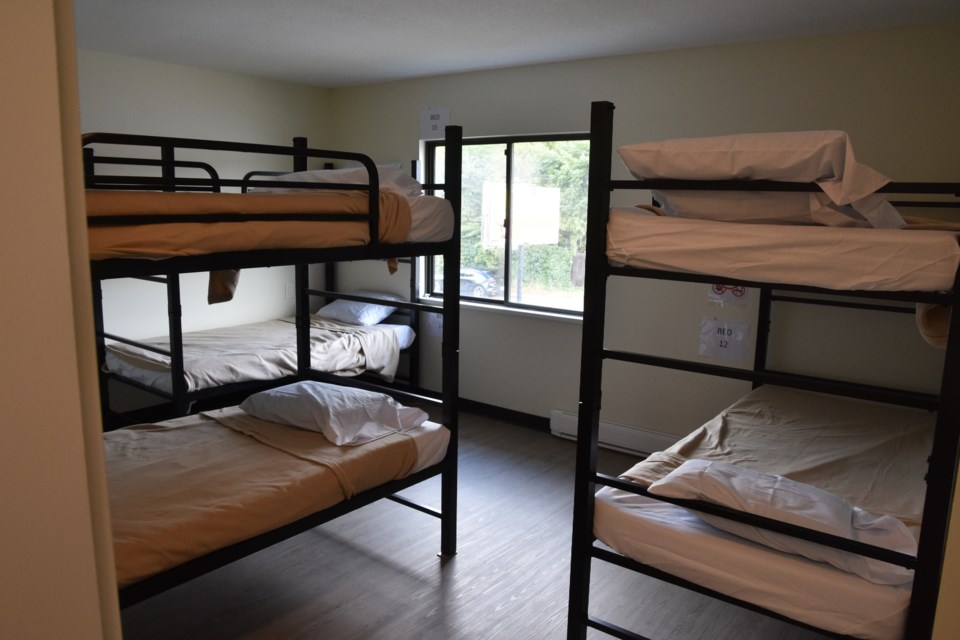Imagine experiencing the hardest days of your life — and nobody cares.
Mandy Hardwick, associate director of RainCity Housing and Support Society, said the goal of the work they and their team do everyday is to let people know that there is someone who cares — no matter what their circumstance.
“It's challenging to work with folks who are really struggling, who are struggling with poverty, with addiction, with homelessness, in our shelter system, and there aren’t a lot of pathways out of that,” said Hardwick during a recent interview with Coast Reporter. “And so, one of the pathways is supportive housing in our buildings.”
Hardwick noted each supportive housing location has a team of peer specialists, including Indigenous cultural liaisons, who bring very specific skills in order to work alongside RainCity clients. They added, there seems to be a real misconception when it comes to what it is RainCity does, so to that end, the society is in the midst of completing a brochure to outline some of its goals, programs and services.
The brochure explains RainCity Housing is an independent, non-profit organization providing housing and support programs to more than 4,000 people across “what is colonially known as British Columbia’s Lower Mainland and Sunshine Coast.”
According to the brochure, it was in the spring of 2016 when the Sunshine Coast community reached out to RainCity for assistance in maintaining outreach services after the extreme weather shelter closed for the season. “This collaboration marked the beginning of a vital partnership to support vulnerable individuals in the area.”
RainCity provides shelter, outreach, overdose prevention and supported housing services to low-income individuals aged 19 and older, who have experienced homelessness and require additional support to maintain stable housing.
On the Coast, RainCity operates the Sechelt Shelter (2017), its outreach program, Hightide Modular Supported Housing (2019), and Gibsons Modular Supported Housing (2021). The Sechelt shelter has 20 beds upstairs and 15 downstairs in the summer, which gets converted to 25 beds in winter.
At each site, staff work alongside individuals to support their self-identified goals, which are rooted in cultural connection and healing, self-determination and harm reduction, “fostering inclusive and respectful spaces where people feel heard and valued.”
To date, more than 1,000 individuals have stayed at the Sechelt Shelter and of that number, 60 per cent are older than 50, with 70 per cent male, and more than 160,000 meals have been served.
Quashing the persistent rumour that homeless individuals are bussed to the Coast from the Lower Mainland, Hardwick said almost 70 per cent of the individuals they serve have lived on the Coast for five years or longer, while the remainder are life-long residents.
“One way to think about it is in terms of shelter systems. We are never going to turn somebody away from the shelter. So, someone's fleeing from whatever environment and they come to the shelter, we're going to welcome them in,” said Hardwick. “We are going to do an intake. We are going to see what kind of support services they need, what kind of medical stuff they’ve got going on, all that kind of stuff. And, the people who I've gotten to know and who I work with, they have relatives right here. They grew up somewhere on the Coast, maybe the upper Coast. There are very few people that I know that have come from the city.”
They note, the lack of affordable housing is a real issue, not just on the Coast but everywhere. Hardwick added, it’s tough to get your life together without a roof over your head. They add, while the tent city is situated adjacent to the supportive housing building on Hightide Avenue and the shelter on Wharf Avenue, they are not part of RainCity.
“But they don’t have bathrooms, they don’t have running water, so we’re not going to turn them away,” said Hardwick, who notes many homeless individuals on the Coast are seniors.
“We see a lot of seniors, a lot of folks who were not visibly homeless, because they were living in the bush. They were living on boats. They were precariously housed in campers that had black mold,” said Hardwick. “It's really the experiences and the stories that have been shared with us. And I think it's because of this effort and the work that we do, we try to break down stigma all the time.”
Hardwick said it’s particularly tough being homeless during the holidays and that a little empathy can go a long way to brightening someone’s spirits. They note the shelter can always use donations, but at this time of year, gifts of warm clothing and blankets can be real lifesavers. Most needed items include warm socks, shoes and boots, jackets, blankets, hats, gloves, clothing and toiletries.
“I think that some of the work that we're trying to do is humanize the realities of that. It's really hard for people to conceptualize if they've never been inside of a system like that. If they've never been institutionalized and never even spent any time in a hospital or done any kind of long-term care,” said Hardwick. “It's really hard to understand what that would be like and how it functions. And I think that's really a missing piece in these conversations.”
The Coast Reporter interview was scheduled more than a week before the District of Sechelt brought forward a notice of motion Dec. 4, requesting the provincial government find a new service provider to take over the supportive housing building and shelter due to concerns with RainCity’s management.
Words missing in article? Your adblocker might be preventing hyperlinked text from appearing.



